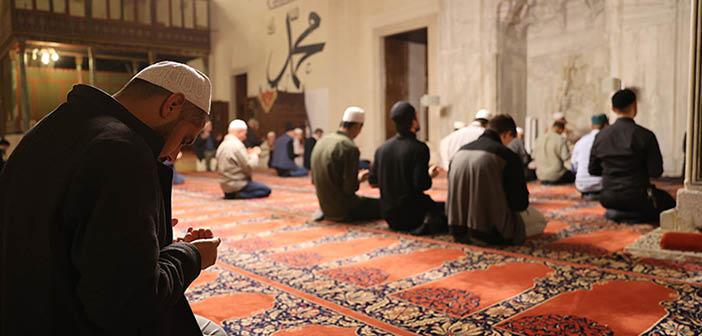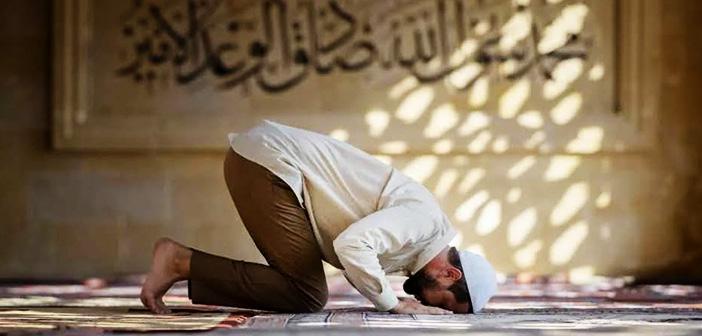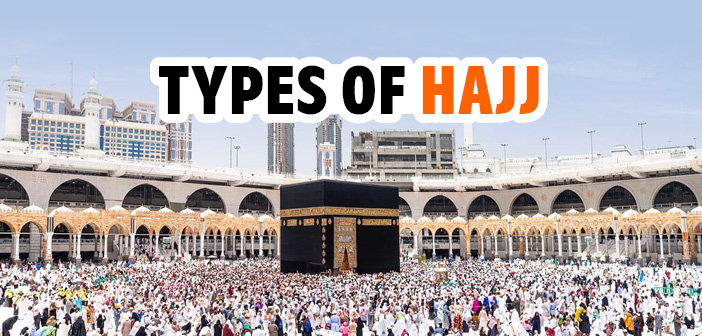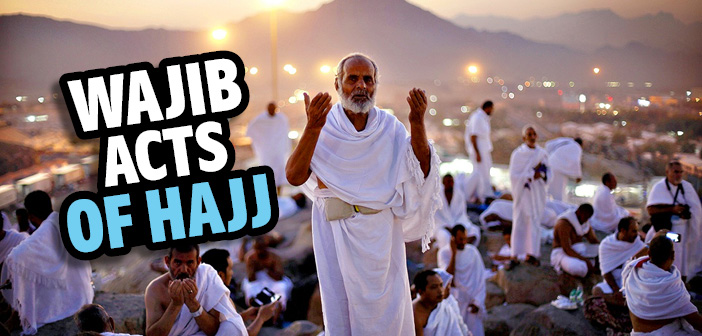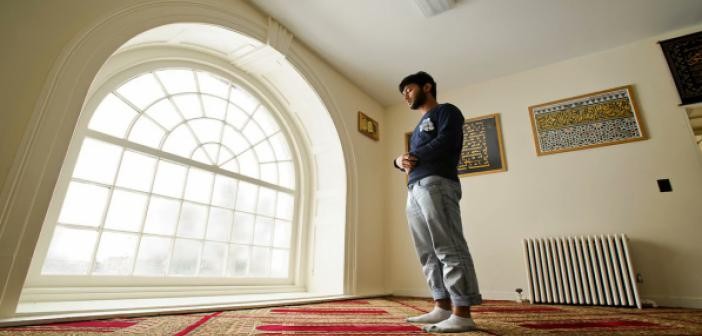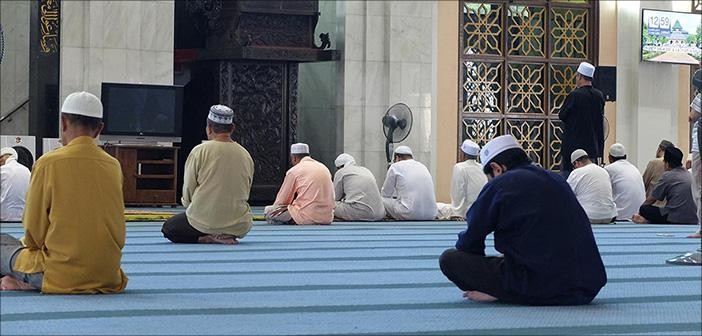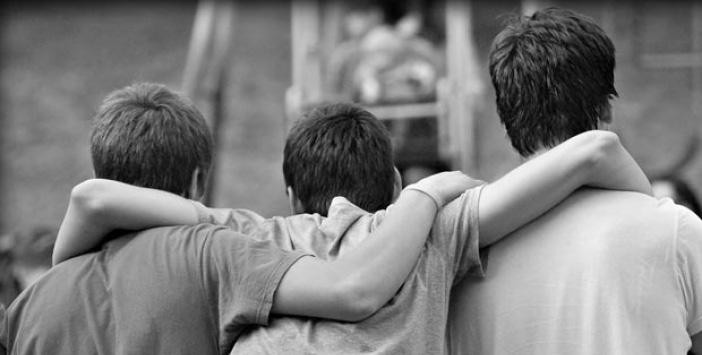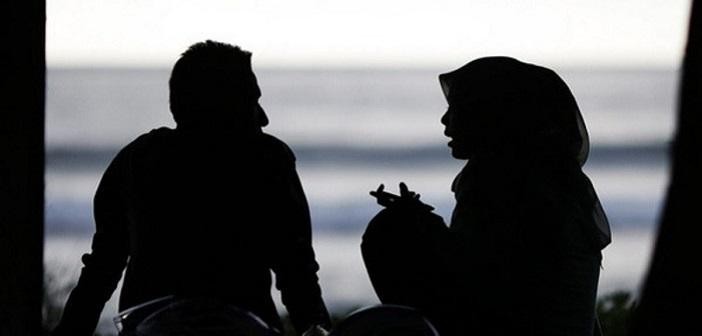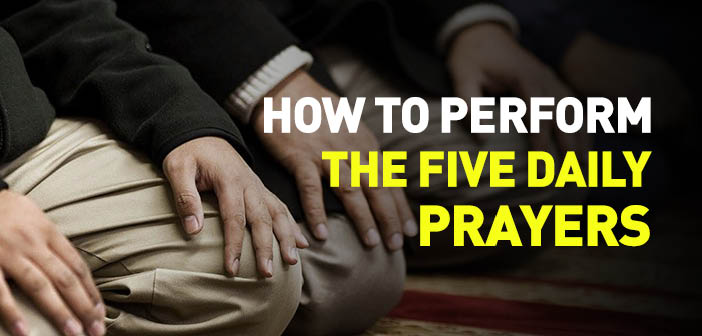
How to Perform The Five Daily Prayers
How do you pray 5 daily prayer? How to perform the five daily prayers? How many rakats is 5 daily prayers? How do i start a daily prayer routine?
A) How to Pray Alone
Prayers are divided into farḍ, wājib, sunnah, mustaḥab, and nāfila types. These prayers, taking into account the farḍ, wājib, and sunnah acts and manners explained earlier, are performed as follows.
1) The Fajr (Dawn) Prayer
According to the Ḥanafis, in order to perform the two-cycle sunnah of the dawn prayer, one expresses the intention to perform the sunnah cycles of today’s dawn prayer, and raises his hands up to the point where his thumbs come to the lobes of his ears and says “Allāhu Akbar”.
After that, he clasps his hands together, according to the Ḥanafis, and recites the following supplication: “Subḥānaka Allāhumma wa bi ḥamdika wa tabarakasmuka wa taʿāla jadduka wa lā ilaha ghayruka”. According to the Shafiʿis, the invocation called tawjīh “wajjahtu wajhiya lilladhī faṭara as-samawāti wa’l-ʿarḍ” is recited in this position. Then follows the statements, “audhu billāhi mina’sh-shaytan’irrajīm (I seek refuge in Allah from the devil who was expelled from divine mercy) – and bismillahi’r-ramāni’r-raḥīm – (I begin in the name of Allah, Most Gracious, Most Merciful)” and recites the chapter of Fatiḥa. According to the Malikis, since recitation of anything, before the sura Fatiḥa is considered makrūḥ, none of the above-mentioned supplications and sentences are recited after the opening takbīr but rather he or she directly starts the recitation of Fatiḥa. At the end of Fatiḥa, he or she says “amīn (accept it, O our Lord)”. After that, she or he reads some additional verses from the Qur’an. What is meant here by additional Qur’anic verse after Fatiḥa is the recitation of at least one chapter or three short verses or one verse that is as long as three short verses.
After that, the worshipper bows down saying “Allāhu Akbar” while doing the rukūʿ. According to the Shafiʿis and the Hanbalis, it is recommended to raise the hands up to the level of the shoulders before rukūʿ and while standing back up from the rukūʿ. While in the position of rukūʿ, he says “subḥāna rabbiya’l-ʿaẓīm (Glory be to my Lord Almighty)” at least three times. Then he stands back up from the rukūʿ saying “samiʿ Allāhu liman ḥamidah (Allah hears the praise of the one who praises Him.)”, and the second part, “Allāhumma Rabbanā laka’l-ḥamd (O Allah! O our Lord, the praise belongs only to You)” while standing. After that, he goes down to prostrate by saying “Allāhu akbar”. While in prostration, he says “subḥāna rabbiya’l-ʿala (Glory be to my Lord, the Most High)” three times. He then rises from prostration to the sitting position by saying “Allāhu Akbar”, after, sitting for a short while, and then does the second prostration by saying “Allāhu Akbar” again. Like in the first prostration, he again says “subḥāna rabbiya’l-ʿala” three times in the second prostration. With this, the first cycle of the ritual prayer becomes complete.
After this second prostration, the second cycle is commenced with saying “Allāhu Akbar” and rising to the standing position. In the standing position, this time only basmala and Fatiḥa and some additional verses from the Qur’an are recited, and then the bowing and the prostrations are performed just as in the first cycle. After the second prostration, the worshipper sits in the sitting position. This sitting is the last sitting in a two-cycle prayer. In this sitting position, the supplications of taḥiyyāt, ṣalli and barik, and “rabbanā ātinā fi’d-dunyā ḥasanatan…” are recited. Finally, he or she offers greetings to the right by turning the face to the right and saying “as-salāmu ʿalaykum wa raḥmatullāh (peace and blessings of Allah be upon you)”, and then turning the face to the left saying again, “as-salāmu ʿalaykum wa raḥmatullāh”. With these salutations, the believers, the angels, and the believing jinns on the right and left sides are all greeted. This completes a two-cycle ritual prayer.
All the takbīrs, tasbiḥāt, and recitations are carried out silently, i.e. in a low voice whereby the person performing the prayer can hear herself or himself.
How men and women raise and clasp their hands in the ritual prayer, and the bodily postures that they do in bowing, prostration, and sitting have been explained earlier under the subjects of “Sunnah acts and the manners of ritual prayer”.
The two obligatory cycles of the dawn ritual prayer are performed as follows:
First, the iqāmah is recited exclusively by men, then the intention is made to “perform the farḍ cycles of today’s dawn prayer” and the prayer is performed as already explained in the sunnah cycles of the dawn prayer except for the slight differences mentioned below.
A minor difference between performing the sunnah cycles and the farḍ cycles of the dawn prayer is that it is sunnah to recite the Qur’an a little bit more after the Fatiḥa in the farḍ cycles. The minimum amount of this sunnah is about forty verses but, it is also permissible to recite three short verses. Moreover, the recitation is kept brief if one fears that the time of prayer will end. In fact, it is sufficient to even only recite the Fatiḥa with only a couple of Qur’anic verses. According to Abu Ḥanīfa, the lower limit of the obligatory recitation is a Qur’anic verse with at least six letters. As in the verses “thumma naẓar (then he looked round)” and “lam yalid (He begets not)”.[1]
It is important to note that a person praying alone can recite the takbīrs, the chapter Fatiḥa, the additional chapter or verses, and the sentence “samiʿ Allāhu liman ḥamidah” aloud while performing the farḍ cycles.
2) The Zuhr (Noon) Prayer
The first two cycles of the four sunnah cycles of the noon prayer are performed exactly like the two cycles of the dawn prayer with two exceptions. First, the intention should be made by saying “I intend for the sake of Allah to perform the first sunnah cycles of today’s noon prayer” and second since the sitting after the second cycle is not the last sitting, but the first sitting, only supplication of “taḥiyyāt” is recited in that sitting, then the third cycle is started by saying “Allāhu Akbar” while standing up for the third cycle. During the third cycle of standing the person reads sura Fatiha and some additional verses from the Qur’an without the recitation of the supplication of subḥānaka. Afterward, the worshipper goes to rukūʿ and prostration as stated above. Afterward, one stands up by saying “Allāhu Akbar” for the final fourth cycle. In the fourth cycle, one goes down to bowing and prostration exactly as in earlier cycles after reciting the basmala, sura Fatiḥa, and some additional verses from the Qur’an, and then sits for the second and last sitting. In this position, the prayers of “taḥiyyāt”, “ṣalli and barik” and “rabbanā ātinā...” are recited and greetings are offered to both sides. This completes the four sunnah cycles of the noon ritual prayer.
The four farḍ cycles of the noon prayer are performed exactly as the four sunnah cycles explained above except for the following differences: after the sunnah, one stands up without dealing with anything contrary to the prayer, and the iqāmah is recited. The intention for the farḍ cycles is expressed by saying “I intend for the sake of Allah to perform the farḍ cycles of today’s noon prayer.” After completing the first two cycles and standing up to the third cycle by saying “Allāhu Akbar”, only the basmala and chapter Fatiḥa are recited in the third and fourth cycles. After the last sitting, the farḍ cycles of noon prayer are completed by offering greetings to both sides.
The number and length of the verses to be recited in the farḍ cycles of noon prayer are usually less than the Qur’anic verses recited in the dawn prayer.
The last two sunnah cycles of the noon prayer are performed by intending, “I tend for the sake of Allah to perform the last sunnah cycles of today’s noon prayer” and are performed exactly like the two sunnah cycles of the dawn prayer. It is mustaḥab to perform this last sunnah in four cycles. In this case, either a salutation is given in every two cycles, or a greeting is said at the end of the four cycles. In the latter case, in the first sitting both the supplications of “taḥiyyāt” and “ṣalli and barik” are recited, whereas the supplication “rabbanā ātinā...” is not recited, and when standing up by saying takbīr for the third cycle, the supplication “subḥānaka” is again recited, and these last two cycles are performed like the previous two cycles.
A person who performs the sunnah cycles and farḍ cycles of the noon prayer reads the whole of the ritual prayer silently.
3) The Asr (Late Afternoon) Prayer
The four sunnah cycles of the late afternoon prayer is a ghayr mu’akkad sunnah. Both cycles are performed like independent prayers. Therefore, each two-cycle of the four cycles is performed like the two sunnah cycles of the dawn prayer. First, the intention is made to “perform the sunnah cycles of today’s late afternoon prayer.” The first two cycles of this prayer are performed like the sunnah cycles of the dawn prayer. This means the last sitting. For this reason, the prayers of “ṣalli and barik” are read together with “taḥiyyāt...”, but not the prayer of “rabbanā ātinā...”. Then the third cycle commences with saying “Allāhu Akbar” and standing. After “subḥānaka” and “aūdhu-basmala”, the Fatiḥa and some more verses from the Qur’an are recited, and after bowing and prostrations, the person stands up for the fourth cycle by reciting a takbīr, followed by “basmala”, the Fatiḥa and some more verses from the Qur’an. The rest of the fourth cycle is performed exactly as the last cycle of any one of the prayers described above.
Performing the farḍ cycles of the late afternoon prayer is done exactly like the farḍ cycles of the noon prayer with only one difference. The intention is stated by saying, “I intend for the sake of Allah to perform the farḍ cycles of today’s late afternoon prayer”.
A person who performs the sunnah and farḍ cycles of the late afternoon prayer alone should perform them silently, just like the noon prayer.
4) The Maghrib (Evening) prayer
The three cycles of the evening prayer are performed like the first three farḍ cycles of the noon and late afternoon prayers. Moreover, in the farḍ cycles of the evening prayer, short suras are recited due to the time constraint of this ritual prayer.
Performing the sunnah cycles of the evening prayer is performed exactly like the sunnah cycles of the dawn prayer except for the phrases of intention. It is mustaḥab to perform it in six cycles. In this case, it is performed with one greeting by performing all six cycles, or by dividing the six cycles into two or three portions by two or three greetings. If a greeting is given in two cycles, both cycles are performed like the sunnah of the dawn prayer. However, it can also be performed like the sunnah cycles of the late afternoon prayer by giving a greeting at the end of four cycles. This additional four-cycle or all six-cycle prayer is called the “Awwābīn Prayer”.[2]
A person who performs the farḍ cycles of the evening prayer alone can it alone can perform it by reciting it aloud, just like the farḍ cycles of the dawn prayer.
Even if a person who has already performed the evening prayer by himself sees that it is being performed in a congregation, he cannot perform it again by following the imam. This is because if he was to do this, his second prayer in the congregation would be deemed a supererogatory prayer, but there is no such thing as a three-cycle supererogatory prayer. Therefore, it is not possible for him to repeat the evening prayer that is being performed in a congregation.
5) The Isha (Night) Prayer
According to the Ḥanafis, the first four-cycle sunnah of the night prayer is a ghayr mu’akkad sunnahs. It is performed exactly like the four sunnah cycles of the late afternoon prayer. Its four farḍ cycles are performed exactly like the farḍ cycles of the noon and late afternoon prayers. As for its last two sunnah cycles, it is performed exactly like the two-cycle sunnahs of the dawn and evening prayers. In these, only the intentions change based upon them being farḍ or sunnah prayers of the night prayer.
The last sunnah of the night prayer can also be performed in four cycles.[3] In this case, it is performed like the first four cycles of the late afternoon prayer. However, it can also be performed by offering greetings at the end of two cycles. In this case, since both cycles will be independent prayers, supplications of “taḥiyyāt”, “ṣalli and barik” and “rabbanā ātinā...” are recited in the last sittings. The best thing to do in supererogatory prayers at night is to offer greetings every two cycles in this way.
A person who prays alone can also pray the farḍ cycles of the night prayer aloud.
A person who has already performed the noon and night prayers by himself is allowed to later follow an imam who leads a congregation. In this case, the prayer that he performs in the congregation turns into a supererogatory prayer and it is hoped that he will receive the reward of the congregation. The reason for this is that it is permissible to perform supererogatory prayers after these prayers. However, it is not permissible for a person who has already performed dawn, late afternoon, and evening prayers by himself later to follow an imam who leads a congregation. This is because these prayers that will be performed for the second time with the imam will turn into supererogatory prayers. This is because it is makrūḥ to perform supererogatory prayers after the dawn and afternoon prayers, and since there is no three-cycle supererogatory prayer similar to the evening prayer, one cannot attend a congregation to perform the farḍ cycles of the above-mentioned prayers.[4] On the other hand, the Messenger of Allah (saw) did say to a Companion in the mosque who had already performed the noon prayer at home and who did not follow the Messenger of Allah in prayer while he was leading this prayer in a congregation: “What prevents you from performing this prayer even though you have come to us?”[5]
B) Witr Prayer
Witr means “odd” numbers in Arabic, the opposite of even numbers. The Prophet (saw) recommended and encouraged the last prayer of the day to be an odd one (witr) and stated that those who are certain that they can wake up a little before the time of the dawn prayer can perform this prayer,[6] and those who are worried that they will not be able to wake up at night,[7] may perform it after the night prayer before going to bed.[8] However, according to Imam Shafiʿi, Imam Malik, and Ahmad ibn Ḥanbal, the witr prayer can be performed after the dawn, as long as one has not been performing the dawn prayer yet.
The witr prayer is based on hadiths.[9] The Prophet (saw) said, “O people of the Qur’an! Perform the witr prayer. Because Allah is one and loves one.”[10], “There are three things that are obligatory upon me, but not obligatory upon you. Mid-morning prayer, sacrifice and witr prayer”[11], and “Allah has added one more prayer for you. This prayer is the witr prayer. Perform the witr prayer between the night (ʿishā) and the dawn (fajr).”[12] According to Abu Ḥanīfa, the command “to perform” in this hadith expresses requirement, and for that reason, he considered witr a wājib act.
According to Abu Yusuf, Imam Muhammad, and the imams of the other three madhhabs, the witr prayer is a mu’akkad sunnah.
According to the Ḥanafis, the witr prayer consists of three cycles, like the evening prayer, performed with the final greetings. The evidence is the following hadith narrated by Aisha, “The Prophet would perform witr in three cycles and salute at the end of the three cycles.”[13] Its difference from the evening prayer is that in each cycle of it, Fatiḥa is recited, followed by some additional verses from the Qur’an, and in the last cycle, hands are raised by saying takbīr before going down to rukūʿ and the supplication of qunūt is recited. According to Abu Ḥanīfa, recitation of the supplication of qunūt is wājib, but according to Abu Yusuf and Imam Muhammad, it is a sunnah.
According to the Malikis, the witr prayer is a one-cycle prayer. After the farḍ cycles of the night prayer, two cycles of sunnah are performed, and one cycle of witr prayer is added to it after offering greetings. According to the Ḥanbalis, witr is a one-cycle prayer, but if three or more cycles are performed, there is no harm in doing so.
According to Shafiʿis, the minimum of the witr prayer is one cycle, and the maximum is eleven cycles. If it is to be performed in more than one cycle, the intention is made for two cycles and the greetings are given at the end of the two-cycle. Then, one intends for one cycle of witr and ends it with the greetings.[14]
The different interpretations of the imams of the madhhab regarding the number of cycles and the application of the witr prayer are based on the following hadiths found below.
“The witr is a duty for every Muslim so if anyone wishes to observe it with five cycles, he may do so; if anyone wishes to observe it with three, he may do so, and if anyone wishes to observe it with one, he may do so.”[15] The following is stated in the hadith narrated by Ibn Hibban, “The Prophet used to separate two cycles of sunnah and the witr (with greetings).”[16] It was narrated from Aisha that she said, “The Messenger of Allah (saw) would not perform supererogatory prayers more than eleven cycles during and outside Ramadan.”[17] In a hadith narrated by Muslim, again from Aisha, it is stated that the Messenger of Allah (saw) offered greetings after every two-cycle of the eleven cycles that he performed until the dawn after the night prayer, and he performed the last one as a single one cycle.[18] Abdullah Ibn ‘Umar and Abdullah Ibn Abbas (r. anhum) said, “The witr prayer is the only cycle performed at the end of the night.”[19]
Some Issues Regarding the Witr Prayer:
1) The witr prayer is performed in congregation only in Ramadan. The imam leads this prayer with a loud voice. According to the preferred view, both the imam and the congregation recite the supplication of qunūt silently in the third cycle. Except in Ramadan, it is considered makrūḥ to perform witr in the congregation.
2) A person who catches up with the imam after the first cycle recites the supplication of qunūt together with the imam, and does not recite the qunūt again while making up the cycles that he missed.
3) If a person who performs the witr prayer doubts whether he is in the second or third cycle, should recite the qunūt in the current cycle, perform one more cycle after bowing and prostrating, and recite the qunūt again in that cycle. Moreover, he or she should perform tashahhud after the rukūʿ and prostrate and then complete the prayer with greetings. If there are any such doubts in the first cycle, the supplication of qunūt should be recited in the cycle that is thought to be the third.
4) According to the Ḥanafis, the supplication of qunūt is not recited in prayers other than witr. Yet, the qunūt can be recited in the farḍ cycles of the dawn prayer but only during times of troubles, strife, and mischief.
According to the Shafiʿis and the Malikis, the supplication of qunūt is recited standing (in the position of qawma) after rukūʿ in the farḍ cycles of the dawn prayers every day. The recitation of qunūt in dawn prayer is mustaḥab according to the Malikis and sunnah according to the Shafiʿis. On the other hand, according to Shafiʿis, it is mandūb to recite the supplication of qunūt after the rukūʿ in the last cycle of the witr prayer in the second half of Ramadan.[20]
5) When a Ḥanafi follows a Shafiʿi or a Maliki imam who recites the supplication of qunūt in the dawn prayer, he remains silent and does not recite the qunūt. If he reads it, he should read it silently.
The supplication of qunūt, which is narrated from Umar and his son Abdullah (r. anhuma) and preferred by the Ḥanafis and the Malikis, is as follows:[21]
اَللّٰهُمَّ إِنَّا نَسْتَعِيْنُكَ وَ نَسْتَغْفِرُكَ، وَ نُؤْمِنُ بِكَ وَنَتَوَكَّلُ عَلَيْكَ وَنُثْنِىْ عَلَيْكَ اْلخَيْرَ كُلَّهُ، نَشْكُرُكَ وَلَا نَكْفُرُكَ، وَنَخْنَعُ لَكَ وَنَخْلَعُ وَنَتْرُكُ مَنْ يَفْجُرُكَ،
اَللّٰهُمَّ اِيَّاكَ نَعْبُدُ، وَلَكَ نُصَلّىْ وَنَسْجُدُ، وَاِلَيْكَ نَسْعَى وَنَحْفِدُ، نَرْجُو رَحْمَتَكَ ونخشى عَذَابَكَ ، اِنَّ عَذَابَكَ بِالْكَافِرِيْنَ مُلْحِقٌ
“Allāhuma! Innā nastaʿīnuka wa nastaghfiruka wa nastahdīk; wa nu’minu bika wa natūbu ilayka wa natawakkalu ʿalayka wa nusnī ʿalayka al-khayra kullahū nashkuruka, wa lā nakfuruk; wa nakhlauʿ wa natruku man yafjuruk.
Allāhuma! Iyyāka naʿbudu wa laka nuṣallī wa nasjudu wa ilayka nasʿā wa naḥfidu narjū raḥmataka wa nakhshā adhābak. Inna adhābaka bi’l-kuffāri mulḥiq.”
“ O, Allah! We implore You for help and beg forgiveness of You and believe in You and rely on You and extol You and we are thankful to You and are not ungrateful to You and we alienate and forsake those who disobey You.
O, Allah! You alone do we worship and for You do we pray and prostrate to and we betake to please You and present ourselves for the service in Your cause and we hope for Your mercy and fear Your chastisement. Undoubtedly, Your torment is going to overtake those who reject the faith, O Allah!”
In addition to the above-mentioned supplication, the following version of the supplication of qunūt is also preferred by Shafiʿis and Hanbalis with slight differences:
“Allahumma ihdinā fiman hadayt, wa 'afina fiman ʿāfayt, wa tawallinā fiman tawallayt, wa bārik lanā fimā aʿṭayt, wa qinā sharra ma qaḍayt, innaka subḥānuka taqḍi wa la yuqḍā ʿalayka, innahu lā yadhillu man wālayt, wa la yaʿizzu man ʿādayt, tabarakta rabbana wa taʿālayt
Allahumma naʿūdhu bi riḍāka min sukhṭika, wa bi ʿafwika min ʿuqubatika, wa bika minka, wa la nuṣḥī thanā’an ʿalayka, anta kama athnayt ʿala nafsik”
“O Allah, guide us with those You have guided, grant us wholeness with those to whom You have granted wholeness, watch over us with those You have watched over, bless us in that which You have given, and protect us from the evil of what You have decreed, for You alone are the One who decrees and disposes. No one to whom You grant your succor will be disgraced, nor will anyone whom You oppose enjoy honor and glory.
O Allah, we seek refuge from Your displeasure in Your favor, we seek refuge from Your chastisement in Your pardon, and we seek refuge from You in You! To You do we offer boundless praise, for Yours are all the praiseworthy attributes with which You have described Yourself”
A person who does not know the supplication of qunūt recites the supplication of “rabbanā atinā” prayer or says “Allāhummaghfirlī (O Allah! Forgive me)” three times or “Yā Rabbī (O my Lord)” three times.
C) How To Perform The Prayers In Congregation:
Those who perform the prayer in the congregation act as follows:
1) Each of the congregation must make an intention to follow the imam, for example, he makes an intention by saying, “I intend to perform the farḍ cycles of today’s dawn prayer, and to follow the imam”. Then the imam starts the prayer by raising his hands and saying loudly “Allāhu Akbar”. The congregation also raises their hands and silently says “Allāhu Akbar” and starts the prayer together with the imam. According to the Ḥanafis, the imam and the congregation recite the “subḥānaka” silently, then the congregation does not recite anything further and awaits silently. It was narrated from Abdullah Ibn Umar (r. anhuma) that he said, “When one of you prays behind the imam, the imam’s recitation is sufficient for him. When he prays alone, let him recite.”[22] The Imam silently recites “Audhu” and “Basmala”, and leads the prayer as follows:
In the first two cycles of the dawn prayer, evening and night prayers, and in all three cycles of the witr prayer, and in all cycles of the Friday and Eid prayers, he recites loudly, that is, in a voice that the congregation can hear, the Fatiḥa and the additional verses from the Qur’an, the other takbīrs, tasmīʿs (saying “samiʿ Allāhu liman ḥamidah”) and the final greetings. In the third and fourth cycles of the evening prayer and the night prayer, and in all the cycles of the noon and afternoon prayers, he recites the takbīrs, tasmīʿs, and greetings loudly, but recites the supplication of “subḥānaka”, Fatiḥa and additional Qur’anic verses silently.
2) The imam should keep the verses that he will recite in the first cycle of the dawn prayer longer than the verses he will recite in the second cycle. This is considered a sunnah. Moreover, this may help the congregation catch up with the first cycle.
3) The congregation recites the takbīrs silently. As the imam gets up from rukūʿ, he says loudly “samiʿ Allāhu liman ḥamidah” and “rabbanā laka’l-ḥamd” silently. According to another narration from Abu Ḥanīfa, the imam does not say “rabbanā laka’l-ḥamd”. Only the congregation silently says this phrase. And again, together with the imam in rukūʿ, the congregation silently says “subḥāna rabbiya’l-ʿaẓīm (Glory be to my Lord Almighty)” three times, and in each prostration, they say silently “subḥāna rabbiya’l-ʿala (Glory is to my Lord, the Most High)” three times.
4) In their first sitting, the imam and the congregation silently recite only the supplication of “tahiyyāt”, and they silently recite the supplications of “ṣalli and barik” and “rabbanā atinā...” together with “taḥiyyāt” in their second sitting. When the imam offers his greetings loudly, first to the right and then to the left, the congregation also silently offers greetings together in this way.
In regards to saying amīn after Fatiḥa in congregational prayers, there are differences of opinion among the schools of Islamic law. According to the Shafiʿis and the Hanbalis, the word amīn should be uttered silently in the prayer that is being performed silently, and aloud in the prayer that is being performed aloud. However, according to the Ḥanafis, one should utter the word amīn silently regardless of whether the prayer is being performed silently or aloud. According to the Malikis, on the other hand, the utterance of the word amīn is recommended for both those praying alone and those being led in prayer regardless of whether the prayer is being performed silently or aloud. As for the imam, it is recommended that he utters it only when he has been reciting silently. Those being led in a prayer being performed aloud should say amīn when they hear the imam utter the final words of the Fatiḥa; as for those being led in a prayer being performed silently, they should say amīn when they hear themselves utter the final words of the Fatiḥa.[23]
5) After the imam offers his greetings, the muezzin loudly says;
اَللهُمَّ اَنْتَ السَّلاَمُ وَمِنْكَ السَّلاَمُ تَباَرَكْتَ يَاذَا الْجَلاَلِ وَا لاِكْرَامْ
“Allāhumma, anta’s-salāmu wa minka’s-salām. Tabārakta yā dha’l-jalāli wa’l-ikrām.”
Meaning: “O Allah, You are peace, peace comes from You. Blessed are You O Possessor of Glory and Honor”
After the farḍ cycles, if there are any sunnah cycles, they are performed, and then blessings and greetings are sent to the Prophet (saw). Either the muezzin loudly recites the Verse of the Throne or each one of the congregation together with the imam, silently recites it.[24] Then they say “subḥānallah”, “al-ḥamdulillāh”, and “Allāhu Akbar” thirty-three times each. The number of these phrases can be counted by means of the fingers of the right hand, or with the beads of the rosary, as long as there is no mistake done in the number.
6) After “subḥānallah”, “al-ḥamdulillāh”, and “Allāhu Akbar” thirty-three times each as mentioned above, the muezzin says with a loud voice,
لاَ اِلٰهَ اِلاٰ اللهُ وَحْدَهُ لاَ شَريكَ لَهُ لَهُ الْمُلْكُ وَلَهُ الْحَمْدُ وَهُوَ عَلٰى كُلِّ شَيْءٍ قَديرٌ سُبْحَانَ رَبِّىَ الْعَلِىُّ اْلاَعْلٰى الْوَهَّابْ
“Lā ilāha illallāhu waḥdahū lā sharīka lah, lahu’l-mulku wa lahu’l-ḥamdu wa huwa ʿalā kulli shay’in qadīr, subḥāna Rabbiya’l-ʿaliyyi’l-aʿla’l-wahhāb”.
“None has the right to be worshipped but Allah; He is One and has no partner. All the kingdoms are His, and all the praises are for Him, and He is Omnipotent. Glory is to my Lord, the Most High, the Bestower.”
After this prayer, the imam and the congregation rub both their hands on their faces.
Those who pray alone also recite all these supplications. These are the mustaḥab acts of the ritual prayer, and those who practice them earn a great reward in the hereafter.
7) The ritual prayers should be performed by observing their times, essential pillars, and cycles. Not only have these been conveyed from the Prophet through tawatur, but also there has been a consensus among the ummah for centuries on these matters. The Messenger of Allah (saw) said, “Perform the prayers as you have seen me performing.”[25] For that reason, a ritual prayer that contradicts the prayers performed by Muhammad (saw) is not considered valid according to the Islamic understanding.
D) Invocations And Adhkar Recited After Prayer
It is sunnah to remember Allah, to recite supplications, and to ask for Allah’s forgiveness after prayers. These invocations and adhkār are recited after the obligatory prayers, as in the dawn and afternoon prayers, or after completing the last sunnah cycles, as in the noon, evening, and night prayers. This is because asking forgiveness of Allah remedies the shortcomings of the ritual prayer and also because making supplications is a way of getting a share of the rewards and goodness.
In principle, invocations and adhkār at the end of the prayer are recited silently. However, the imam can loudly recite invocations and adhkār in order to teach the congregation. At the end of the ritual prayer, the imam turns towards the congregation and turns his left side slightly towards the prayer niche. It is reported that Samura (ra) said, “When the Prophet (saw) led the prayer, he would turn his face towards us.”[26] Furthermore, Bara ibn Āzib (ra) said, “When we prayed behind the Prophet, we wanted to stand on his right side. Because when that happened, his face would be turned towards us.”[27]
The main invocations and adhkār made by the Messenger of Allah (saw) after the ritual prayers are as follows:
1) To say three times
اَسْتَغْفِرُ اللهَ اْلعَظ۪يمَ الَذ۪ى لاَ اِلَهَ اِلاّٰ هُوَ الْحَىُ اْلقَيُّومُ واَتُوبُ اِلَيه .
“Astaghfirullāh (I ask forgiveness from Allah)” or saying three times “Astaghfirullah al-aẓīm alladhī lā ilāha illā huwa, al-hayya l-qayyūma wa atūbu ilayh”
“I ask forgiveness from Allah, the Almighty, there is no god but Him, who is Ḥayy and Qayyūm (Living with life without beginning and end, and the Subsisting with His essence and perfection, that is, the sole absolute ruler in the administration and protection of His creatures at all times).
This is based upon the following hadith reported from Thawbān (ra): “When the Prophet greeted us at the end of prayer - when he finished his prayer - he would say “astaghfirullāh (I seek the forgiveness of Allah)” three times and then would say:
“Allāhumma, anta’s-salāmu wa minka’s-salām. Tabārakta yā dha’l-jalāli wa’l-ikrām.”
“O Allah, You are peace, peace comes from You. Blessed are You O Possessor of Glory and Honor”[28]
He would then say:
اَللَهُمّ اَعِنِّى عَلَى ذِكْرِكَ وَشُكْرِكَ وَحُسْنِ عِبَادَتِكَ
“Allāhumma aʿinnī ʿalā dhikrīka wa shukrika wa husni ʿibādatik.”
“O, Allah! Help me in remembering You, thanking You, and worshiping You well.” The Prophet (saw) advised Muadh ibn Jabal to say this prayer at every ritual prayer or at the end of every ritual prayer.[29]
2) Reciting Ayat al-Kursī (Verse of the Throne): In a report narrated from Abu Umāma (ra), it is said, “Whoever recites the verse of ayat al-kursī and chapter al-ikhlas after the obligatory prayer, there will be no obstacle for him to enter Paradise.”[30]
3) To glorify Allah after prayers: Saying 33 times “subḥānallah (I declare that Allah is free from all deficiencies)”, 33 times “alḥamdulillāh (all praise is due to Allah)”, and 33 times “Allāhu Akbar (I declare that Allah is exalted above all).” On the hundredth time, it is stated, “Lā ilāha illallāhu waḥdahū lā sharīka lah, lahu’l-mulku wa lahu’l-ḥamdu wa huwa ʿalā kulli shayin qadīr”
The proof of this is the following hadith reported by Abu Hurayra: “If anyone extols Allah after every prayer thirty-three times, praises Allah thirty-three times, and declares His Greatness thirty-three times, ninety-nine times in all, and says to complete a hundred: “There is no god but Allah, having no partner with Him, to Him belongs sovereignty and to Him is praise due, and He is Potent over everything,” his sins will be forgiven even If these are as abundant as the foam of the sea.”[31]
The narration from Abu Dhar (ra) is as follows: “It was said to the Prophet (ﷺ) and perhaps (one of the narrators) Sufyan said: I said: O Messenger of Allah! Those who have property and wealth have surpassed us in reward. They say the same as we do, and they spend but we do not spend.’ He said to me: ‘Shall I not tell you something which, if you do it, you will catch up with those who have surpassed you and you will excel over those who come after you? Praise Allah (by saying alḥamdulillāh) after every prayer, and glorify Him (by saying Subḥanallāh) and extol Him (by saying Allāhu Akbar), thirty-three, thirty-three, and thirty-four times.’” Sufyan said: “I do not know which of them was to be recited thirty-four times.”[32]
4) Afterward, the person performing the ritual prayer and the imam both ask Allah for the goodness of the world and the hereafter for himself and his Muslim brothers and sisters. The most virtuous of the invocations are the ones that are narrated in the Sunnah. One of them was narrated by Ṣaʿd Ibn Abi Waqqās (ra), “Ṣaʿd (ra) taught his sons the following words as if he were teaching children how to write, and said: “The Messenger of Allah (saw) took refuge in Allah with the following invocation after each prayer:[33]
اَللَّهُمَّ اِنِّى اَعُوذُ بِكَ مِنَ الْبُخْلِ وَ اَعُوذُ بِكَ مِنَ الْجُبْنِ وَاَعُوذُ بِكَ مِنْ اَنْ أُرَدَّ اِلَى اَٴرْذَلِ اْلعُمُرِ وَاَعُوذُ بِكَ مِنْ فِتْنَةِ الدُّ نْيَا وَاَعُوذُ بِكَ مِنْ عَذَابِ الْقَبْرِ.
“Allāhumma innī aūdhu bika mina’l-bukhli wa aūdhu bika mina’l-jubni wa aūdhu bika min an uradda ilā ardhali’l-ʿumuri wa aūdhu bika min fitnati’d-dunyā aūdhu bika min adhābi’l-qabri.”
“O, Allah! I seek refuge in You from miserliness. I seek refuge in You from cowardice. I seek refuge in You from a depressed and needy old age. I seek refuge in you from the trial of the world. I seek refuge in you from the torment of the grave.”
Manners of Saying Invocations
In prayer, the hands are raised up to shoulder level. If there is difficulty in this, they are raised up as much as possible. Hands should be kept at a natural distance from each other.
The prayer begins with praising Allah and sending peace and blessings to His Messenger and ends by saying “al-Ḥamdulillāh” again. This is because Allah Almighty says in the Qur’an, “(This will be) their cry therein: ‘Glory to You, O Allah!’ And ‘Peace’ will be their greeting therein! and the close of their cry will be: “Praise be to Allah, the Cherisher and Sustainer of the worlds!’”[34] As a matter of fact, the end of the prayers is concluded with the following verse in accordance with this meaning:
سُبْحَانَ رَبِّكَ رَبِّ الْعِزّةِ عَمّا يَصِفُونَ ،
وَسَلاَمٌ عَلَى الْمُرْ سَلِينَ وَالْحَمْدُ لِلّهِ رَبِّ الْعَالَمِينَ .
“Subḥāna Rabbika Rabbi’l-Izzati ʿammā yasifūn wa salamun ʿala’l-mursalin wa’l-ḥamdu lillahi Rabbi’l-alamīn.”
“Glory to your Lord, the Lord of Honor and Power! (He is free) from what they ascribe (to Him)! And Peace on the messengers! And Praise to Allah, the Lord, and Cherisher of the Worlds.”[35]
[1] See al-Kāsānī, ibid, I, 110; Ibn al-Humām, ibid, I, 193, 205, 322 ff.; Ibn Abidīn, ibid, I, 415; al-Zaylaī, Tabyīn al-Ḥaqāiq, I, 104 ff.; Bilmen, ibid, p. 153 ff.[2] See al-‘Isrā, 17: 25; al-Haythamī, Majma’ al-Zawāid, Egypt (n.d.) II, 230.[3] See al-Zaylaī, Naṣb al-Rāya, II, 145 ff.; al-Shawkanī, Nayl al-Awṭār, III, 18; al-Shurunbulālī, Marāq al-Falaḥ, p. 64.[4] Abū Dawūd, Ṣalāh, 56; al-Taḥanāwī, Iʿla al-Sunan, IV, 267, Hadith No: 1263- 1266, 287, Hadith No: 1273.[5] Aḥmad ibn Ḥanbal, IV, 215.[6] Muslim, Musāfirīn, 53.[7] Al-Tirmidhī, Witr, 12; Abū Dawūd, Witr, 8.[8] Muslim, Musāfirīn, 53.[9] Al-Kāsānī, ibid, I, 270-274; Ibn al- Humām, ibid, I, 310 ff.; al-Shirazī, Muhadhdhab, I. 83; Ibn Qudāmah, Mughnī, II, 150, 165.[10] Al-Bukhari, Daʿawāt, 69; Muslim, Dhikr, 5, 6; Abū Dawūd, Witr 1; al-Tirmidhī, Witr, 2; al-Nasā’ī, Qiyām al-layl, 27.[11] Al-Zaylaī, Naṣb al-Rāya, II, 105.[12] Aḥmad ibn Ḥanbal, II, 180, 206, 208, V, 242, VI, 7; See al-Tirmidhī, Witr, 12; Abū Dawūd, Witr, 8; Muslim, Ṣalāt al-Musāfirīn, 53.[13] This hadith was narrated by al-Hakim and said that it complies with the conditions of al-Bukhari and Muslim. Al-Nasā’ī narrated it with the addition of the following sentence “The Prophet (pbuh) did not greet in two cycles in witr prayer.” See al-Zaylaī, Naṣb, II, 118 ff.[14] Al-Kāsānī, ibid. I, 270 ff.; al-Maydanī, Lubāb, I, 78; Ibn Qudāmah, Mughnī, II, 150; al-Zuhaylī, ibid, I, 820 ff.[15] Abū Dawūd, Witr, 3; al-Nasā’ī, Qiyām al-Layl, 40; Ibn Maja, ‘Iqāmah, 123; Aḥmad ibn Ḥanbal, V, 357.[16] Aḥmad ibn Ḥanbal, VI, 84.[17] Al-Bukhari, TaḤajjud, 3, 16.[18] See Ibn Maja, ‘Iqāmah, 125, 181; Abū Dawūd, Ṭaṭawwū’, 26; Aḥmad ibn Ḥanbal, I, 170; Malik, Muwaṭṭā’, Ṣalāt al-Layl, 8; Muslim, Musāfirīn, 121.[19] Muslim, Ṣalāt al- Musāfirīn, 153; Abū Dawūd, Witr, 3; al-Nasā’ī, Qiyām al-Layl, 34.[20] Al-Zaylaī, Naṣb al-Rāya, II, 123; Al-Zuhaylī, ibid, I, 826 ff.[21] Al-Kāsānī, ibid, I, 273 ff.; Ibn al-Humām, ibid, I, 309 ff.; Al-Maydanī, ibid, I, 78 ff.; Ibn Abidīn, ibid, I, 626; Al-Zuhaylī, ibid, I, 810.[22] Malik, Muwaṭṭā’, Ṣalāh, 10, Hadith No: 43.[23] Jaziri, ibid, p. 325.[24] See al-Baqara, 2: 255.[25] Al-Bukhari, Adhān, 18, Adab, 27, Aḥad, 1.[26] Al-Bukhari, Adhān, 156, Janā’iz, 93; Abū Dawūd, Ṭaḥāra, 65; al-Tirmidhī, Janā’iz, 59; al-Nasā’ī, 28, 147, Sahw, 25, 102.[27] Ibn Maja, Muqaddimah, 6, Manāsik, 13; Aḥmad ibn Ḥanbal, II, 541, III, 5, 65.[28] Muslim, Masājid, 135, 136; Ibn Maja, ‘Iqāmah, 32, Hadith No: 927; al-Shawkanī, ibid, II, 300.[29] Aḥmad ibn Ḥanbal, V, 247.[30] Al-Ṣan’ānī, Subul al-Salām, I, 200.[31] Muslim, Masājid, 144-146.[32] Ibn Maja, ‘Iqāmah, 32, Hadith No: 927. The narrator Sufyān hesitated which one was the thirty-fourth.[33] See al-Bukhari, Adhān, 149; Muslim, Dhikr, 50, 52, Masājid, 134, Abū Dawūd, Ṣalāh, 149, 179; al-Nasā’ī, Sahw, 64.[34] Yunus, 10: 10.[35] Al-Ṣaffāt, 37: 180-182.
Source: Basic Islamic Principles (ilmiḥal) According to the Four Sunni Schools With Evidence From The Sources of Islamic Law, Prof. Hamdi Döndüren, Erkam Publications


